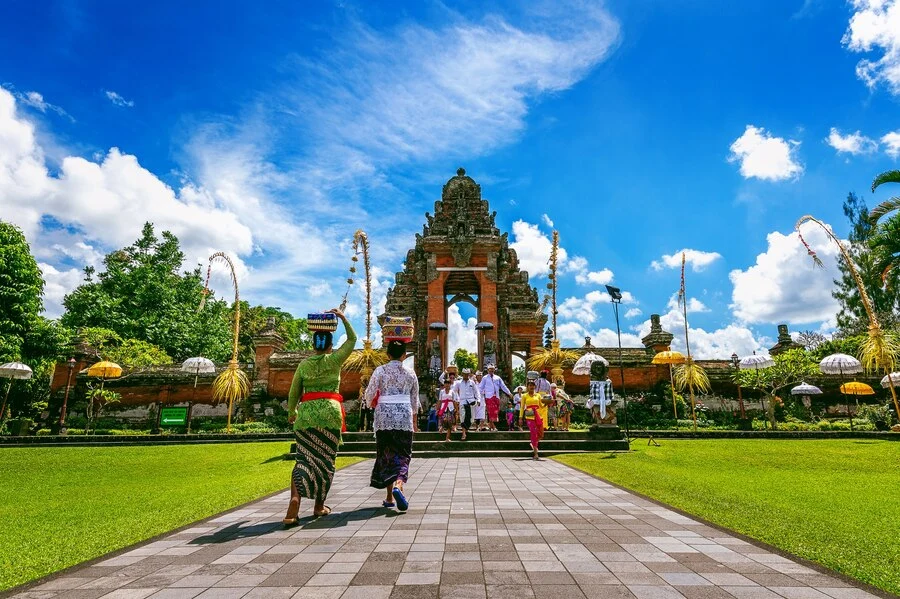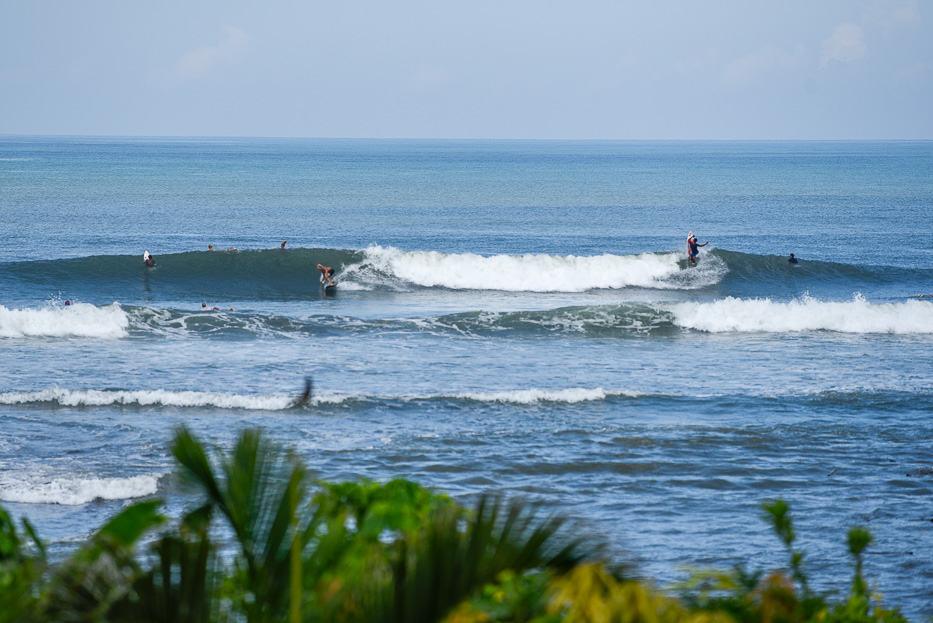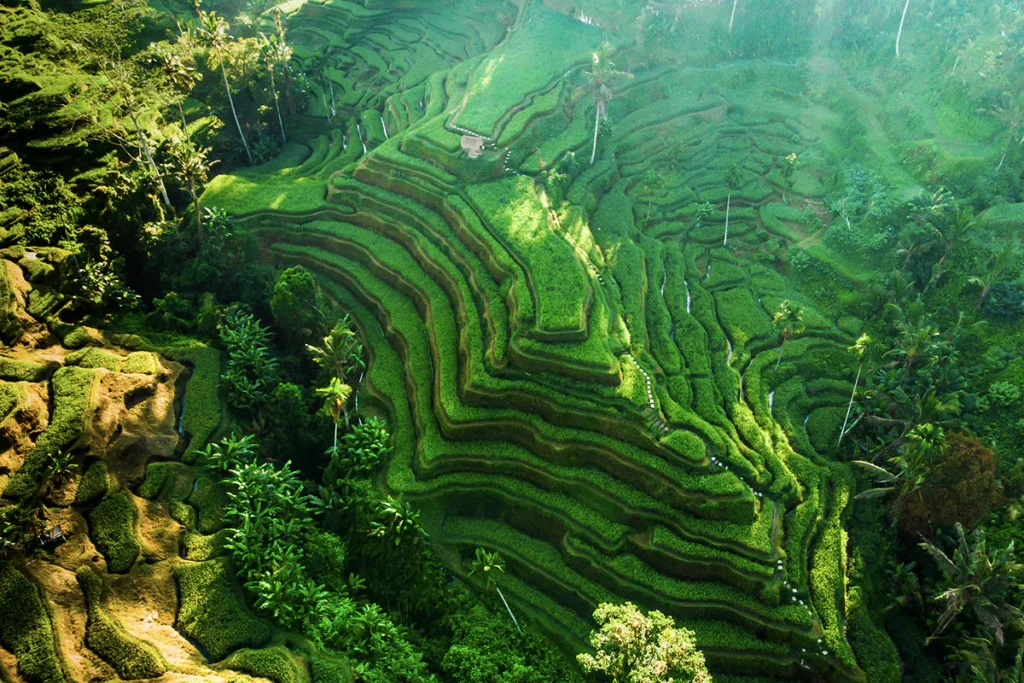Bali’s breathtaking geography is one of the key elements that make it a dream destination for travelers from around the globe. Its diverse landscapes, ranging from towering volcanoes and lush rice terraces to pristine beaches and vibrant coral reefs, reflect the island’s natural beauty and deep spiritual connection with the land. Let’s explore Bali’s geography in detail to uncover the wonders that define this tropical paradise, along with suggestions for where to experience each unique feature.
The Central Highlands: Home to Sacred Volcanoes
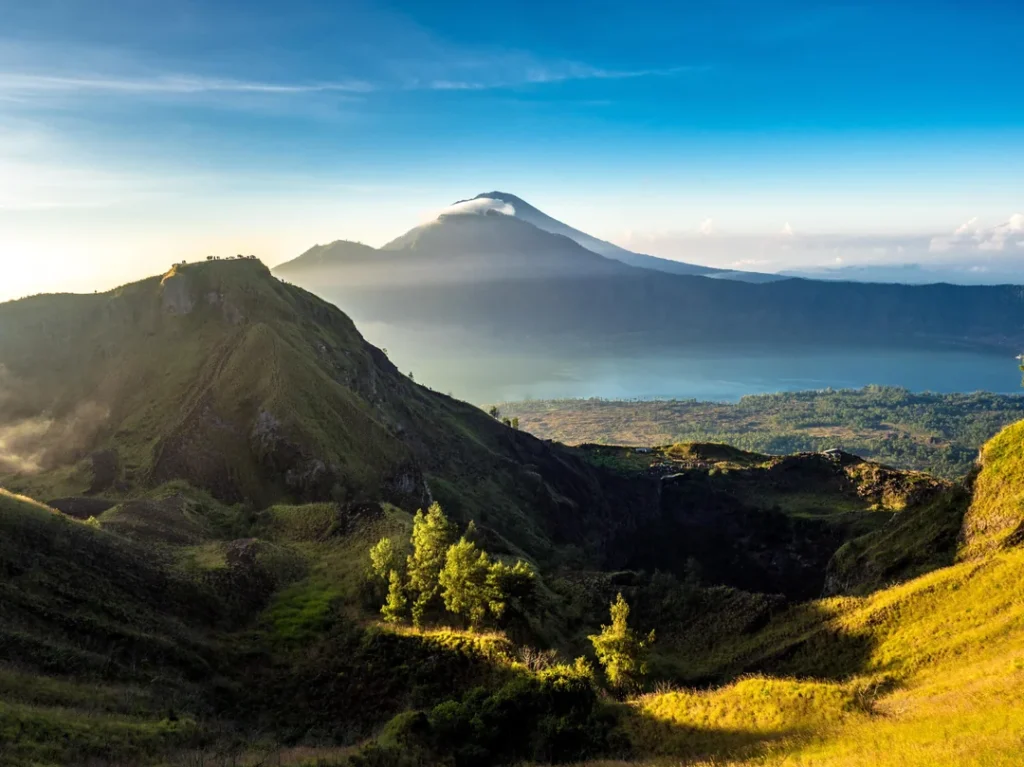
Bali’s central region is dominated by volcanic mountains, which are both geological wonders and spiritual symbols for the Balinese people. The most prominent of these is Mount Agung, the highest peak on the island at 3,031 meters (9,944 feet). Agung is considered the “home of the gods” and a focal point of Balinese spirituality. Temples like Besakih, also known as the Mother Temple, are strategically built in alignment with this majestic volcano, offering visitors a chance to experience its spiritual significance.
Mount Batur, another active volcano, is equally awe-inspiring. Nestled within a massive caldera that also contains Lake Batur, the largest lake in Bali, it is a must-visit destination for adventurers. The sunrise trek to Mount Batur’s summit is a bucket-list experience, offering panoramic views of the island and beyond. After the trek, visitors can relax at Toyabungkah Hot Springs, where the warm waters soothe tired muscles.
Nearby, Kintamani Village provides some of the best panoramic views of Mount Batur and the surrounding caldera. Local restaurants here serve traditional Balinese cuisine, allowing you to dine while soaking in the scenery.
The Iconic Rice Terraces: A Symbol of Harmony
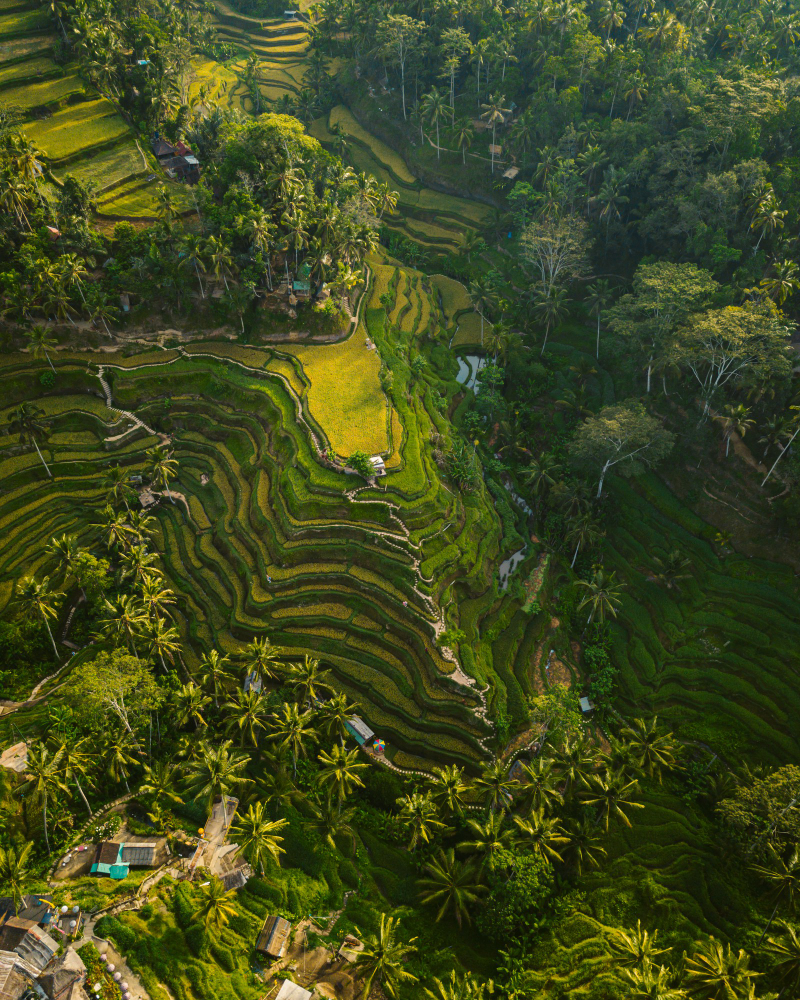
The terraced rice fields of Bali are among the island’s most iconic features, showcasing both its natural beauty and cultural ingenuity. The most famous terraces can be found in Tegalalang, near Ubud, and Jatiluwih, a UNESCO World Heritage Site. These terraces are best visited at sunrise or sunset when the golden light enhances their emerald hues, creating a truly magical atmosphere.
The rice terraces are maintained using the Subak irrigation system, a cooperative water management practice that dates back to the 9th century. Subak reflects the Balinese philosophy of Tri Hita Karana, emphasizing harmony between humans, nature, and the spiritual world.
For a more off-the-beaten-path experience, the Sidemen Valley offers lush rice fields in a serene setting. Walking through the valley, visitors can interact with local farmers and gain insight into the traditional farming practices that sustain Balinese communities.
The Coastline: Beaches, Coral Reefs, and Fishing Villages
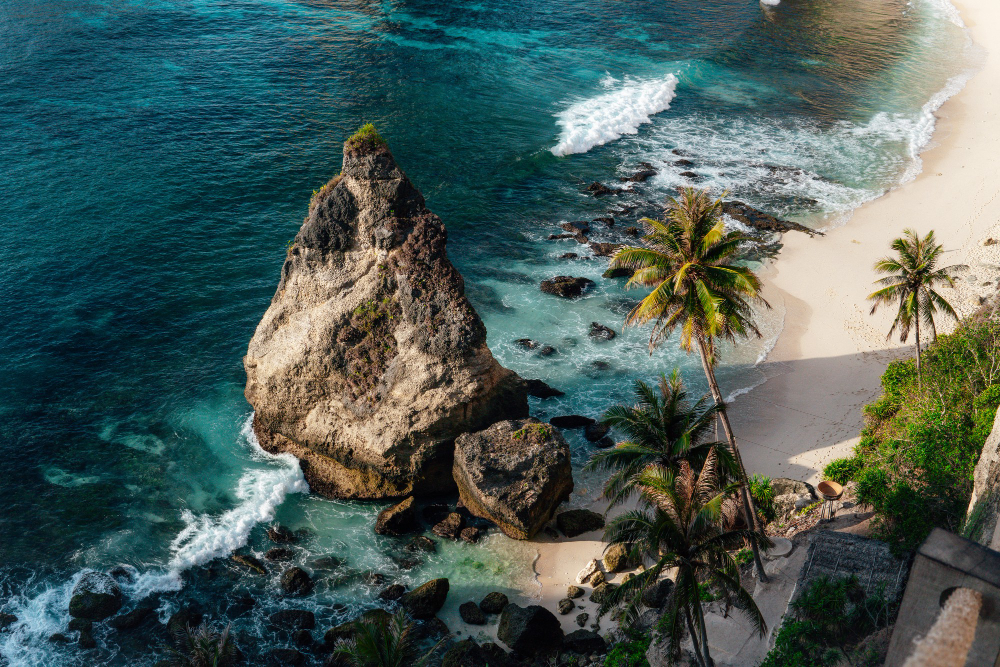
Bali’s coastline spans over 400 kilometers (250 miles) and offers a diverse range of experiences. The southern beaches, such as Seminyak, Kuta, and Nusa Dua, are known for their golden sands, luxury resorts, and vibrant nightlife. These areas attract sun-seekers, surfers, and families looking for a mix of relaxation and entertainment. Don’t miss beach clubs like Potato Head and Finns Beach Club for the ultimate seaside experience.
In contrast, the northern and eastern coasts reveal quieter charms. The black sand beaches of Amed and Lovina, formed by volcanic activity, offer serene settings and opportunities for snorkeling and diving. Lovina is particularly famous for its dolphin-watching tours at dawn, followed by a visit to Banjar Hot Springs for a relaxing soak.
The small islands surrounding Bali, including Nusa Penida, Nusa Lembongan, and Nusa Ceningan, are renowned for their dramatic cliffs, hidden coves, and vibrant coral reefs. Highlights include snorkeling at Crystal Bay and diving with manta rays at Manta Point on Nusa Penida.
Lakes and Rivers: Bali’s Lifelines
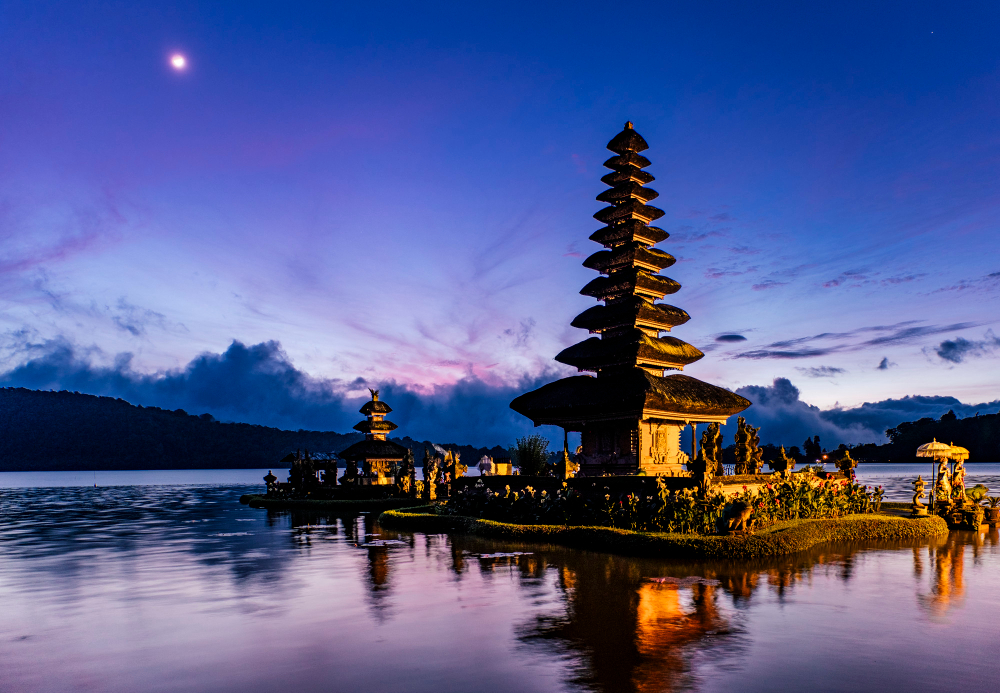
Bali is home to several lakes and rivers that play essential roles in its ecosystems and spiritual practices. Lake Beratan, located near the mountain resort of Bedugul, is a stunning crater lake that hosts the iconic Ulun Danu Beratan Temple, dedicated to the goddess of water. The temple appears to float on the lake, creating a picturesque and serene setting.
Other notable lakes include Lake Buyan and Lake Tamblingan, which are surrounded by lush forests and offer tranquil escapes for nature lovers. Visitors can enjoy canoeing, trekking, or simply soaking in the peaceful atmosphere.
The rivers of Bali, such as the Ayung and Telaga Waja, are not only vital for irrigation but also popular adventure destinations. White-water rafting along these rivers provides a thrilling way to explore Bali’s tropical jungles and deep river gorges.
Forests and Wildlife: Bali’s Green Heart

Bali’s forests, particularly in the central and northern regions, are havens for wildlife and a vital part of the island’s ecosystem. The Sacred Monkey Forest in Ubud is a popular tourist destination, home to hundreds of long-tailed macaques and ancient temples hidden among towering trees.
In Munduk, the cool mountain air and lush forests are perfect for trekking to scenic waterfalls like Munduk Waterfall and Melanting Waterfall. For those seeking biodiversity, West Bali National Park offers opportunities for birdwatching, trekking, and snorkeling at Menjangan Island, a marine sanctuary.
Marine Life: A World Beneath the Waves
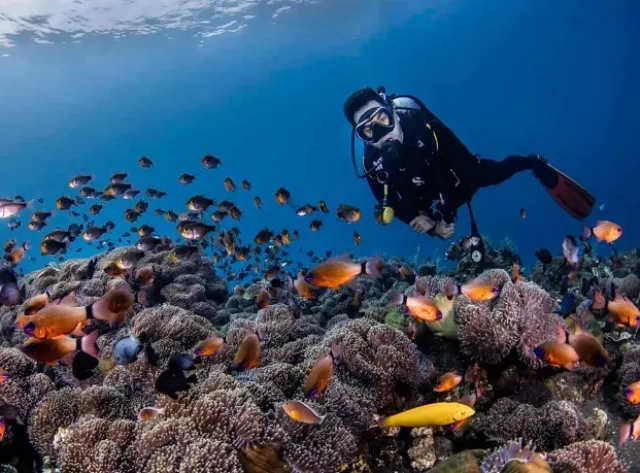
Bali’s surrounding waters are teeming with marine life, making it a top destination for diving and snorkeling. The coral reefs of Tulamben, particularly the USAT Liberty Shipwreck, attract divers from around the globe. The vibrant marine ecosystems of Menjangan Island are another highlight, with crystal-clear waters perfect for underwater exploration.
In Nusa Penida, snorkeling at Crystal Bay and diving with the majestic mola-mola (ocean sunfish) are unforgettable experiences. These underwater adventures reveal the island’s rich biodiversity, from manta rays to reef sharks and tropical fish.
The Role of Geography in Balinese Culture
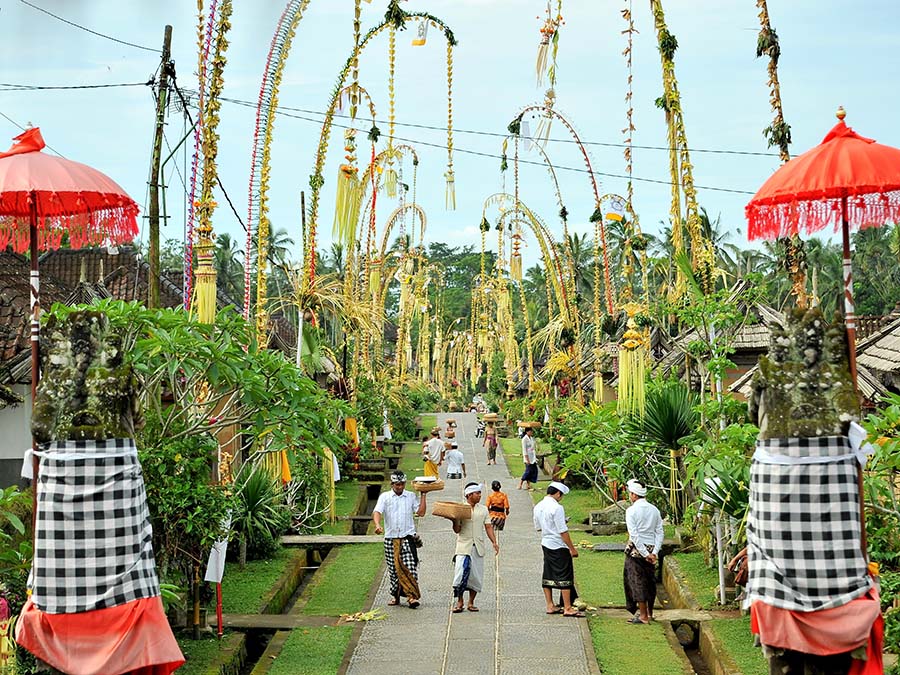
Bali’s geography is deeply intertwined with its culture and spirituality. The island’s natural features—volcanoes, lakes, rivers, and the sea—are considered sacred and are often referenced in religious ceremonies. Water from sacred springs and lakes is used in temple rituals, while Mount Agung serves as a spiritual axis connecting heaven, earth, and the underworld.
Traditional villages like Penglipuran Village embody this connection, showcasing clean, harmonious streets and homes designed in accordance with Asta Kosala Kosali, a traditional architectural principle.
Bali’s diverse geography offers endless opportunities for exploration and adventure. Whether you’re hiking through volcanic landscapes, diving into vibrant coral reefs, or wandering through emerald-green rice terraces, the island’s natural beauty will leave you in awe.
This harmonious blend of natural wonders and cultural significance is what makes Bali more than just a destination—it’s an experience that connects you with the essence of the earth and the spirit of the island. Where will your Bali adventure begin?
